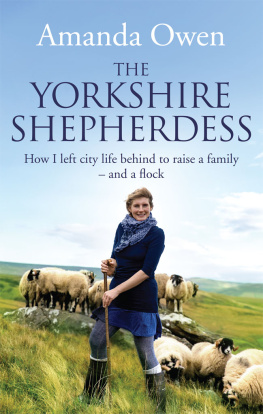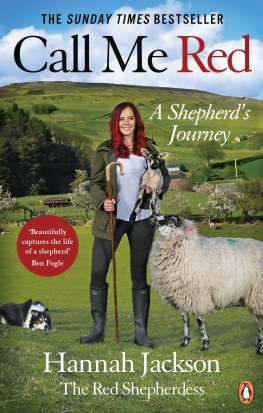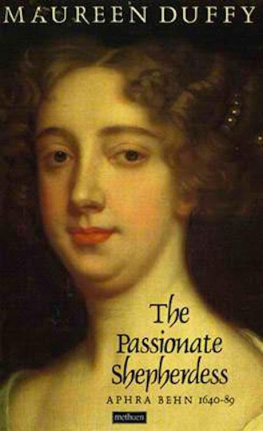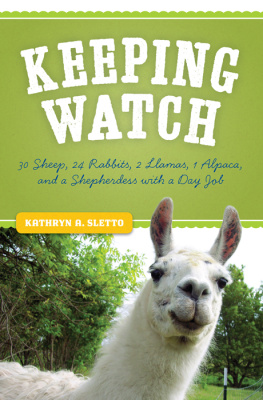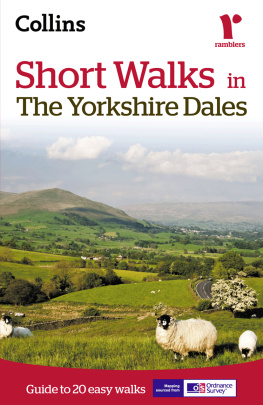
To my family
Introduction
Will you take the trailer and fetch a tup from a mate of mine? Hes a right good Swaledale breeder, and he lends me a tup every year.
It was a normal enough request from the farmer I was working for. A tup is a ram, and he needed to put one in with his sheep, for obvious reasons. He helped me hitch an old trailer on to the back of his pickup, and off I went, with only minimal directions, and worried about whether the pickup and trailer would make it.
It was October 1996, chilly and dark as I drove along the road from Kirkby Stephen, heading across the border of Cumbria and Yorkshire into Swaledale, peering through the murk to spot a sign to the farm where his friend lived. I was used to farm signs that are nothing more than a piece of wood someone has scrawled the name on, so as the road unwound and switchbacked through the dark hills, I began to think I must have missed it. But I hadnt passed any turnings: this was as remote as you could get.
Then there it was, a good clear road sign picked up in the truck headlights, RAVENSEAT ONLY , 1 MILES . I turned up the narrow road, the rickety wooden trailer bouncing behind, the headlights occasionally picking up sheep staring fixedly towards me. Better not run over one of his sheep before I get there, I thought.
At last, after what seemed like an age, I came to a dead stop. With no warning, I had reached a ford. I wasnt risking driving the low-slung pickup with its rusty doors through the stream, but a quick paddle in my wellies showed the water was only up to my ankles. The pickup plunged through the ford and up into a muddy farmyard, with a farmhouse to my right and some ancient stone barns ahead of me. In the dim light over a stable door I could see a cow chewing her cud, and within a second of me arriving a barking sheepdog emerged from the darkness. Experience has taught me to be wary of territorial farm dogs, so I was relieved when a pool of light spilled from the front door and the farmer came out.
Ga an lie down.
I assumed the command was not for me and, sure enough, the dog slunk away back into the shadows.
Away in, mi lass, and Ill get tkettle on.
There was no great feeling that Id met my destiny; no instant romantic attraction. I was just relieved to have made it, in need of a cup of tea, and anxious to get on with the hair-raising return journey.
But looking back, with a marriage and seven children to our credit, I can see that this was the defining moment in my life. This was when I met two of the things I love most: Clive Owen, my husband, and Ravenseat Farm, the most beautiful place on earth.
I really mean it when I say it is beautiful. Yes, its bleak, its remote, the wind howls round it, driving rain into the very fabric of the building. The snow piles up in winter and when the electricity and the water are off we live like those farmers who built the place, all those centuries ago, carrying water from the river and cooking over an open fire. But its the best place in the world to rear children and animals, and I wouldnt swap it for anything. Even now, after years of living here, there are moments when I catch my breath at the splendour of the place.
But life here is no idyll. We work hard to keep our animals and our children safe and healthy in this challenging environment.
For most hill farmers, its a traditional way of life, one they were born into. But me? Im a townie. An offcumden, or incomer. When I talked to the careers teachers at the large comprehensive in Huddersfield where I went to school, shepherdess and farmer were not options that came up.
So how did I find my way here, to the highest, most remote farm in Swaledale, the most northerly of the Yorkshire dales?
This is the story of me, my family and, in a starring role, Ravenseat itself.
1
A Normal Childhood
If I had to choose one word to describe my childhood, it would be normal. I was born in Huddersfield, in September 1974, the first child of Joyce and Maurice Livingstone. Huddersfield grew big around the wool-weaving mills that sprang up during the industrial revolution. A small woollen industry survives but, like so many northern towns, the main focus has gone. Still, it is a thriving, busy place.
They were happy days. Our semi-detached house had been built at the turn of the century. It had a substantial garage, a front and back garden and a steep driveway leading down onto a busy road. One of my earliest memories is of pedalling up and down the drive on my three-wheeler bike, which became unstable when cornering at speed. I crashed into one of the big stone pillars at the gateway and knocked four front teeth out. Luckily, they were my first teeth, so no lasting damage. On several occasions I was precipitated into the laurel bushes, and once I remember being skewered by the thorns of a vicious rose. I also had a succession of roller skates, go-karts and scooters, but the downside of living at the top of quite a steep hill meant that outings would often end in tumbles and tears. To a small child there seemed to be lots of places to play, although, of course, when Ive been back it all seems much smaller than it is in my memories.
My first school was Stile Common Infants, an old Victorian building a short walk from home. It was a multiracial school, and I grew up with Asian, black and white friends. At seven I transferred into the more modern Stile Common Juniors, but kept my same circle of friends.
When I was six my sister Katie was born, an event I can only vaguely remember. I do recall my secret trick to pacify her when she was fractious. I would reach through the bars of the cot and pluck Katies dummy from her, then nip downstairs to the kitchen. By standing on a lidded yellow bucket in which her nappies were soaking, I could reach a jar of honey and dip the dummy into it, scooping up a big sticky blob. Then Id pop the honeyed dummy back into Katies mouth. Mother thought that I had some kind of magic touch. But it was only a matter of time before I was found out: the lid of the bucket caved in one day, the contents sloshed across the kitchen floor and the smell of bleach pervaded the house.
Father was an engineer, working at the famous David Brown factory which made tractors and tanks. He spent as much of his spare time as he could in our garage at home, repairing motorbikes, which was his passion. However, he had the ability and knowhow to be able to fix anything, whether it was a sausage machine from a factory or a refrigeration unit at a local supermarket.
Fathers family had all had motorbikes when they were young, and he had won many trophies for road racing and trialling. He had a number of bikes, some entire, others in pieces. His pride and joy was his blue metallic Honda, but his Norton road bike with its wide square seat was my favourite, not least because I felt more secure when riding pillion. I would cling on to him, my arms wrapped round his greasy Belstaff coat while he drove rather cautiously I suspect on instruction from my mother, who was understandably worried for my safety. Sooner or later it was bound to happen: I was eight or nine when I took a backwards tumble off a trials bike at Post Hill, near Leeds, an area of rough land with woods, stream and quarries where bikers try their skills. Trials bikes are not designed for two and while negotiating a steep, rocky incline my father perhaps forgot I was there, perched up on the rear mudguard. It was only when he cleared the section that he looked back and saw a small figure wearing an oversized crash helmet, waving frantically from below. My dignity was more hurt than my body.
Next page
